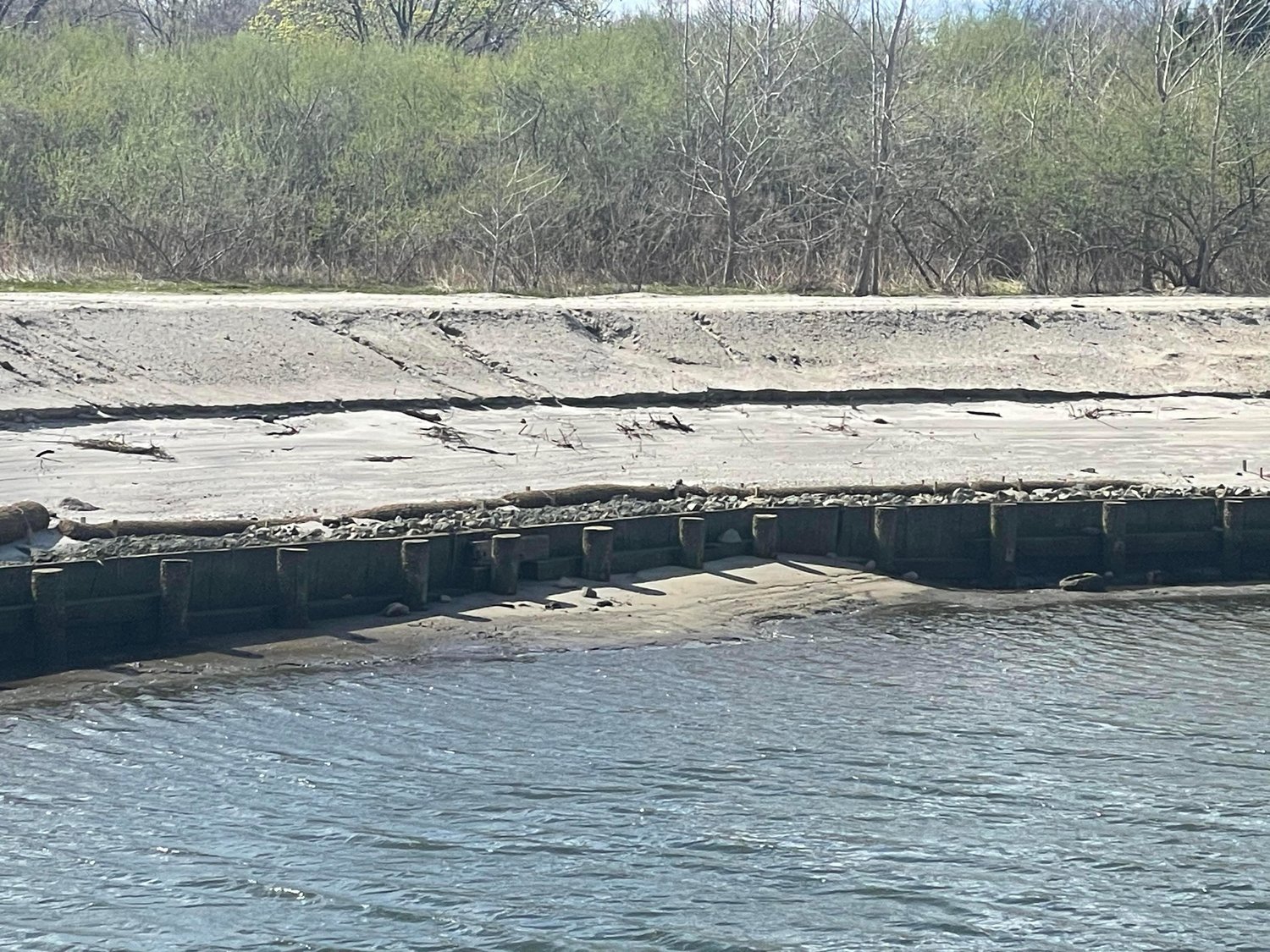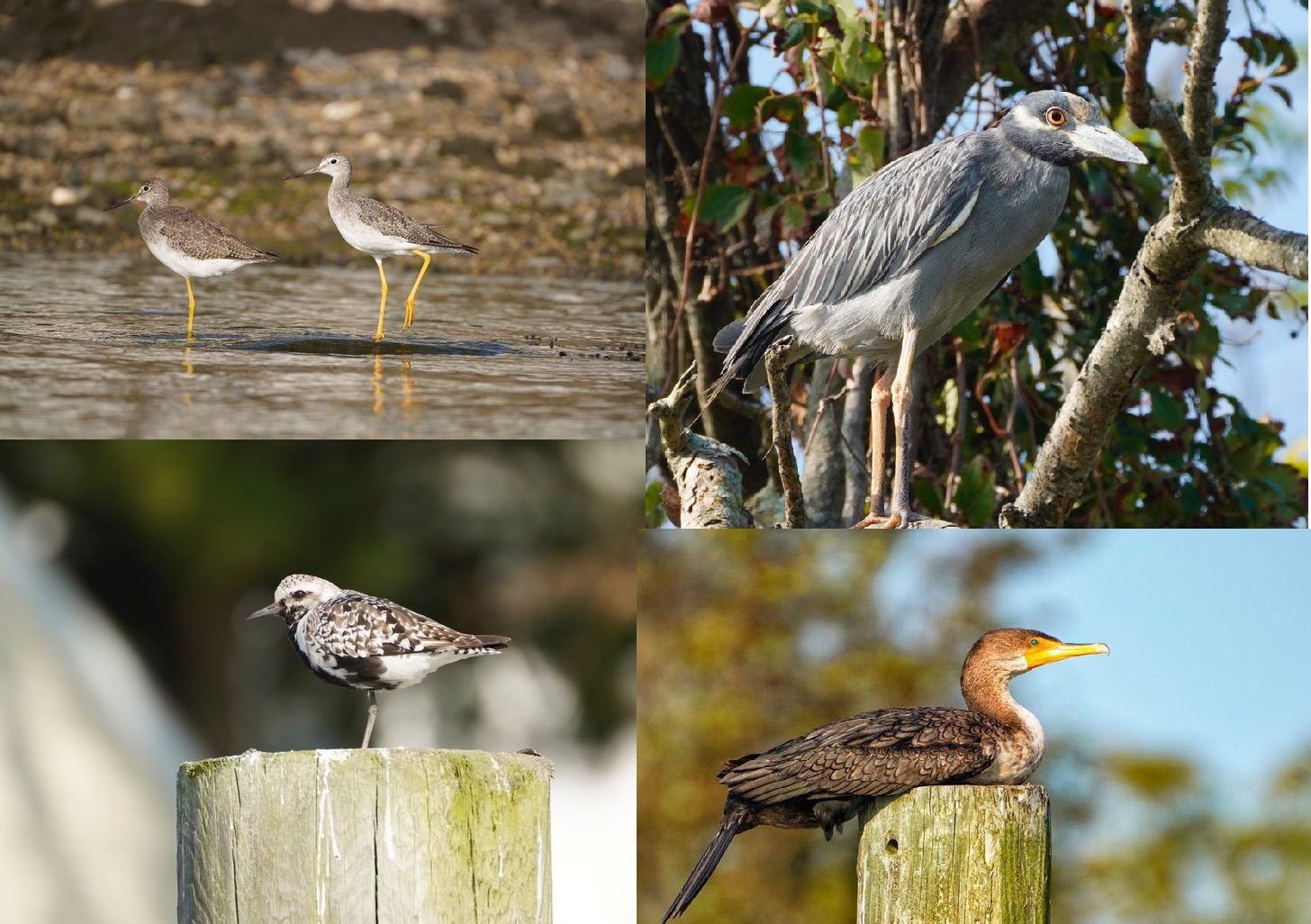Living shoreline raises concern from locals
Bonnie and Richard Weinstein live on Bertha Drive next to Patrick Keating on Oakwood Canal, both of their backyard views used to be a tranquil scene with native birds leisurely migrating, now, however, persistent vibrations from close by heavy machinery are slowly fragmenting their homes.
Along with the cracks in basements and outdoor structures, sand that was dumped by construction crews are trickling into the canal, making many fear it will not be accessible by boats for a day out or by the Coast Guard should an issue arise, which has happened in the past with drunk boaters.
What’s occurring in the canal adjacent the properties are the process of creating a living shoreline as part of the Baldwin Harbor Park Shoreline Stabilization Project, a $4 million dollar effort to protect against future storms funded by the U.S. Department of Housing and Urban Development and administered by the New York State Governor’s Office of Storm Recovery (GOSR.)
Living shorelines are defined by National Oceanic and Atmospheric Administration (NOAA) as “Protected and stabilized shorelines made from natural materials such as plants, sand, or rock.” However, residents say this sort of construction is not feasible in Oakwood Canal due to the erratic weather conditions that can flip on a dime and the zigzag design of the original canal that breaks up wave momentum.
The project faced pushback from the start once canal residents learned that approximately 800 linear feet of the existing bulkhead would be replaced with a new one and about 1,600 linear feet of the existing bulkhead would be replaced by the new, natural shoreline. Now residents are becoming increasingly frustrated as development amps up.
In January 2020 a number of residents protested at the Town of Hempstead public meeting citing concerns over nature, safety, and privacy. Keating spoke up at the meeting critiquing the engineering by Jeffery Tierney, the Deputy Commissioner of Engineering, telling him that “You’re not looking at the dimensions and the dynamics of the waves further back than 800 feet…you need 1,600 feet at a bare minimum,” he was told in reply, “We’re confident in our engineering.”
Keating is now facing his fears two years later, taking videos and snapshots of sand blowing into the canal during 20 mile per hour winds and up, he is now asking for dredging, communication and reparations for damages.
“The entire backyard has collapsed; my bulkhead is down four inches…we’re talking lots of money here,” he said. “In fairness I don’t know if they’re done, but that’s because there is no communication, we are so blind,” Keating sighed showing the damage done by the repeated pounding of heavy machinery.
Bonnie Weinstein, a Baldwin resident for 50 years, claims the area was originally a “wildlife conservation area” and then the decision was made to make a natural shoreline. “They decided to put a kayak ramp and cut down hundreds of trees and disturb tons of wildlife…they cut the bulkhead in half…now three quarters of my canal, I’ve been here 50 years, have now been closed in.”
“This will destroy decades of resurgence of migratory species, we had an eagle who had no place to go after they chopped down his tree, he had to nest on top of the crane,” Weinstein stated based off of her observations.
The New York State Department of Environmental Conservation (DEC) visited the site recently on April 13, telling the Herald that while there they, “Noted no violations with living shoreline aspects of the approved DEC permit. DEC staff will continue to monitor progress at this site as work progresses.”
Removing the bulkheads and creation of living shoreline, the DEC indicated, “Will result in more wave attenuation and less energy traveling up the canal. Instead of bouncing off of the vertical bulkhead walls, storm waves will wash ashore into the living shoreline/park area where they will dissipate and lose energy before returning more slowly to the bay.”
Saying as time goes on, “It is possible the park shoreline will retreat landward, due to sea level rise and other climate change effects, but there is room here for the intertidal marsh, once established, to migrate landward naturally with higher water levels.”
A permit issued by the DEC for the site will require plantings be put in place before the project is deemed complete. The DEC stated that “Plans call for low marsh areas to be planted with smooth cordgrass (Spartina Alterflora), high marsh areas to be planted with saltmeadow cordgrass (Spartina Patens), upland grass areas with American Beachgrass. Upland shrubs including Bayberry, Beach Plum and Grousel Trees will also be planted at the site.”
No permit was issued on the matter of domestic birds because, “No threatened or endangered species were known to regularly utilize the site,” cited the DEC, “so the permit did not need to have special conditions protecting them.” Affirming that the completed shoreline will offer “Low marsh, high marsh and vegetated upland area that will provide nesting and foraging habitat for a variety of coastal bird species.”
Katie Brennan, Executive Director of the Governor’s Office of Storm Recovery, said, “The living shoreline at Baldwin Park is a prime example of the innovative solutions being implemented by GOSR to protect residents, property, and our environment.” Concluding that, “This green infrastructure, designed in consultation with state and federal regulatory agencies, will stabilize the shoreline, increase habitat, and absorb wave energy during high tides and storm surges.”
Work in the harbor will continue as normal in accordance with the DEC issued permit that allows work to take place from 7/30/2018 until 7/29/2023 when the permit expires. More information on the project can be found on the Town of Hempstead’s website at: https://hempsteadny.gov/Document Center/View/178/Baldwin-Shoreline-Stabilization-Project-PDF?bidId=.
Don Clavin, Supervisor of the Town of Hempstead, did not return the Herald’s email on the damages down to properties on the canal allegedly caused by construction.

 59.0°,
Partly Cloudy
59.0°,
Partly Cloudy 








